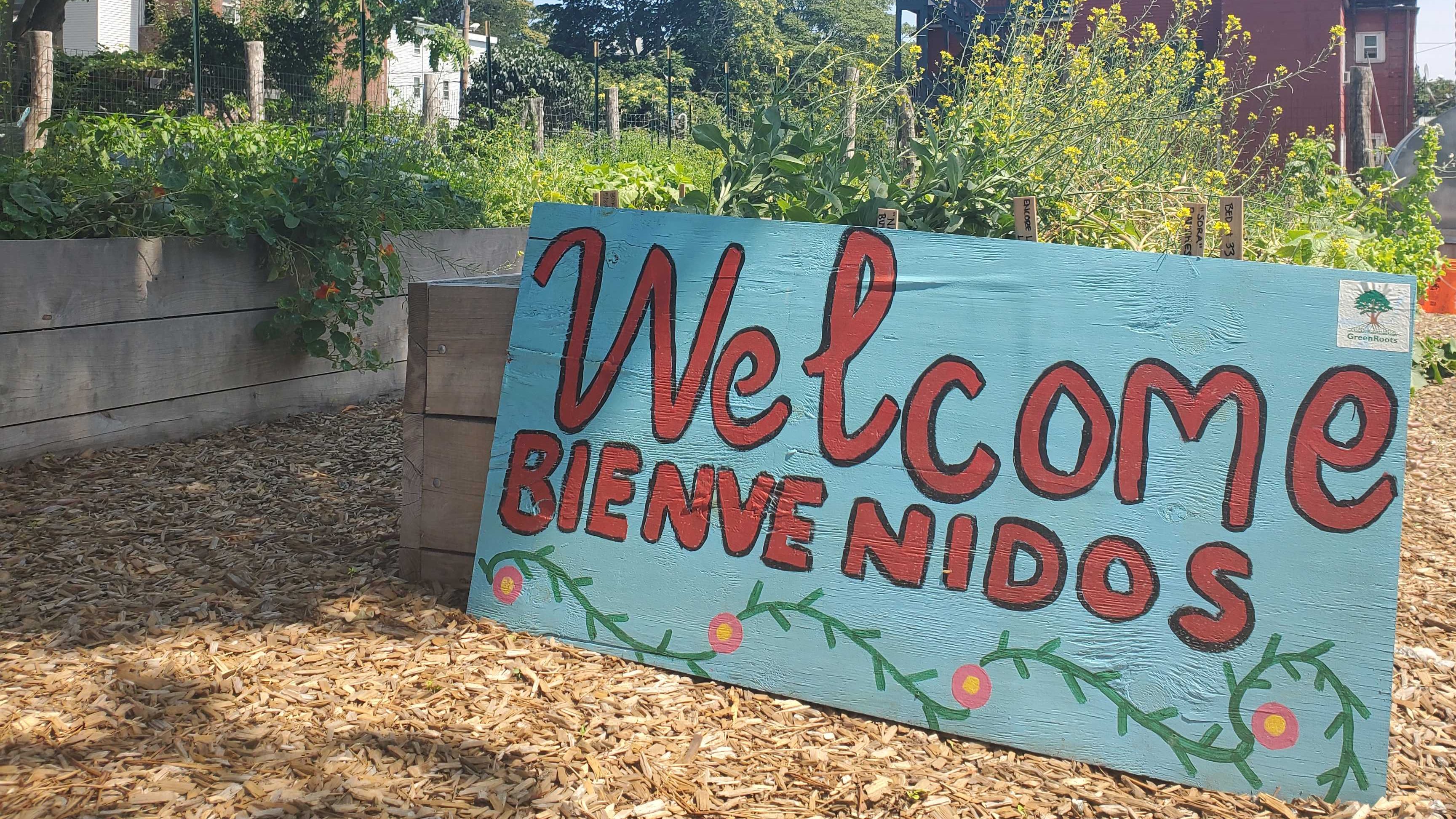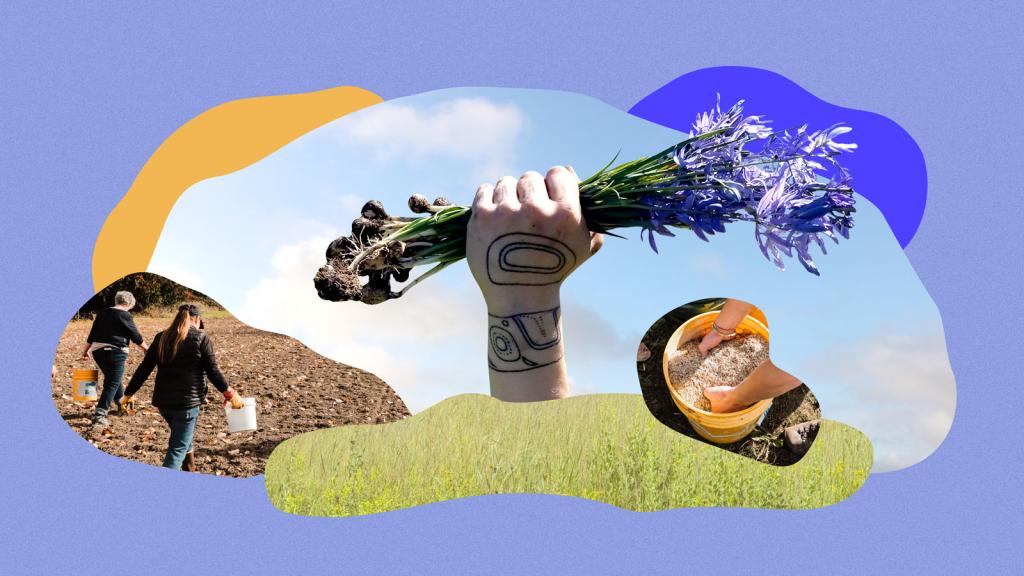In Chelsea, Massachusetts — a 2-square-mile chunk of mostly industrial land across the river from Boston — a tiny urban farm sits in a gravel parking lot, sandwiched between towering, tarp-covered salt piles and a tightly packed residential neighborhood.
The farm was created to provide food for the Waterfront District’s high concentration of undocumented people, who don’t qualify for federal assistance and struggle to make ends meet in the gentrifying city. And that it does: 10 undocumented families visit the farm regularly to harvest from beds containing an abundance of peppers, holy basil, and fist-sized tomatoes.
But in the middle of its first growing season, the farm has also become a community hub. It’s a place for field trips, sharing knowledge, and people who just want to say hey. Excess food gets cooked into a weekly community meal held by a nearby young mothers’ program.
“We want to connect people back to growing, so they feel like they’re taking care of this piece of land together,” says Leilani Mroczkowski, food justice organizer and farmer extraordinaire for GreenRoots, the nonprofit behind the farm. “We also want to connect people to Chelsea.”
I spoke with Mroczkowski on a recent afternoon, as kids ran between the wooden beds, spraying plants — and each other — with a garden hose. Here’s an excerpt from our conversation, edited for length and clarity.

Q.Why did you decide to create a farm for families who are undocumented?
A.When we asked the community for feedback, a lot of folks wanted a green space that people could visit, and a lot of folks said they didn’t have enough money to buy food. So a community urban farm made sense. Also, when folks are undocumented, they often live in fear and isolation. They don’t leave their houses, or they’re very cautious about where they’re going. We want the farm to be a place you don’t have to be scared to come out to.
Q.How’s the first growing season going?
A.There’s been a lot of learning. We got our first crop of lettuce in, and then we lost the second and third because we didn’t have the water installed yet. The East Coast is hella old, so when workers got into the ground, they were like, “Oh my god, these pipes are from the 1800s.” And then they disintegrated. But we got the water, finally, and things have been really good since then.
Q.How are people in the neighborhood responding to the farm?
A.There’s been a lot of interest from the families that come here in actually learning. Kids are into exploring — they’ll pull radishes and they’ll want to keep pulling radishes. There are a lot of folks who are coming from Central America, where the growing season is all year long, so they want to learn tips and tricks for making plants grow in New England weather.
Q.Have they taught you things too?
A.I personally don’t like chamomile, but I learned from the residents that they use it for literally every kind of ailment, so I planted more chamomile. One of my colleagues from El Salvador showed me a plant that looks like a very common weed that we have here, and she was like, “This is a staple in our diet. If you grow this, people are gonna love it.”
Q.What do you hope the farm does for the community?
A.We want to build connections, so that when it’s election season and candidates are talking about their policies, folks might think, “I know people who are immigrants. I know people who don’t have documents. This policy doesn’t actually work for my neighbor.”

